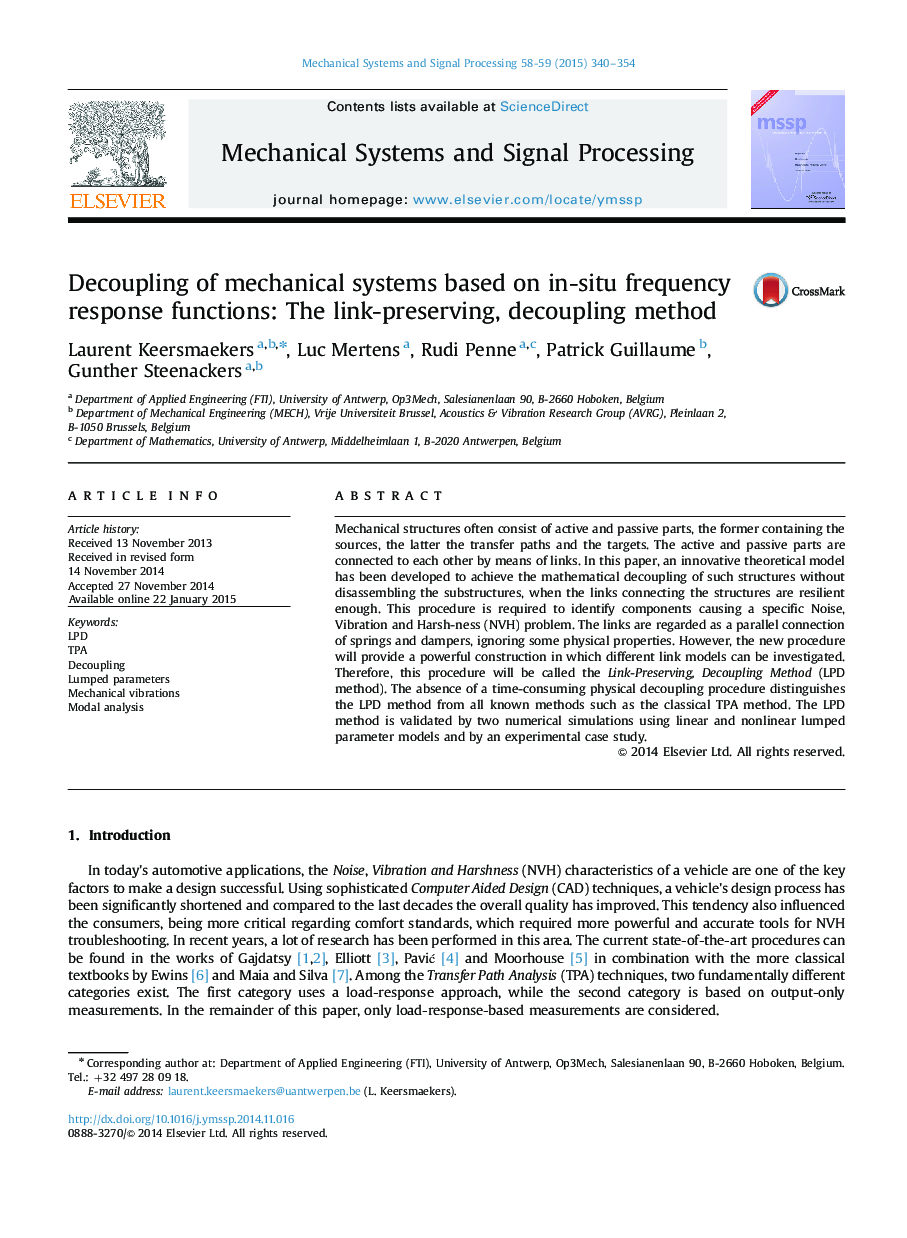| Article ID | Journal | Published Year | Pages | File Type |
|---|---|---|---|---|
| 6956089 | Mechanical Systems and Signal Processing | 2015 | 15 Pages |
Abstract
Mechanical structures often consist of active and passive parts, the former containing the sources, the latter the transfer paths and the targets. The active and passive parts are connected to each other by means of links. In this paper, an innovative theoretical model has been developed to achieve the mathematical decoupling of such structures without disassembling the substructures, when the links connecting the structures are resilient enough. This procedure is required to identify components causing a specific Noise, Vibration and Harsh-ness (NVH) problem. The links are regarded as a parallel connection of springs and dampers, ignoring some physical properties. However, the new procedure will provide a powerful construction in which different link models can be investigated. Therefore, this procedure will be called the Link-Preserving, Decoupling Method (LPD method). The absence of a time-consuming physical decoupling procedure distinguishes the LPD method from all known methods such as the classical TPA method. The LPD method is validated by two numerical simulations using linear and nonlinear lumped parameter models and by an experimental case study.
Related Topics
Physical Sciences and Engineering
Computer Science
Signal Processing
Authors
Laurent Keersmaekers, Luc Mertens, Rudi Penne, Patrick Guillaume, Gunther Steenackers,
